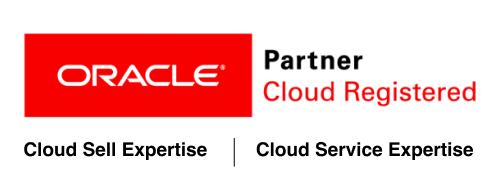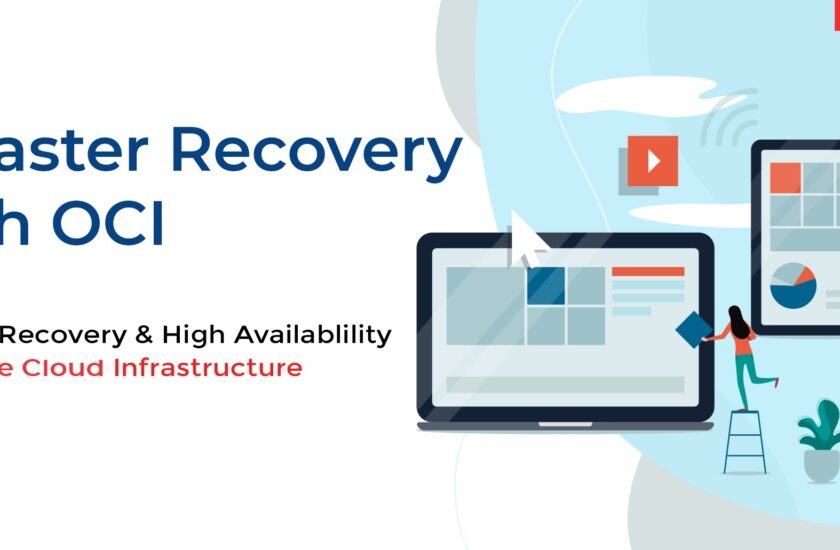Designed for Resilience and Reliability: Cloud-based DR strategy formulation
CDWT, the top application-focused, automation-driven cloud managed services provider in the world, is adamant about offering fully uninterrupted, end-to-end cloud experiences from the infra to the application login layer. CDWT’s outstanding DR-as-a-Service capabilities intended to keep companies safe from catastrophes and unanticipated repercussions, providing uninterrupted services and adding crucial resilience to corporate workloads, databases, and operations as a whole, are a cornerstone of this credibility. The 4-way DR architecture spanning various regions or cloud availability zones is the core of CDWT’s unique Disaster Recovery capabilities. All business IT workloads and databases are synced and auto-copied across 4 locations with varied degrees of military-grade security and connectivity, regardless of the deployment model (cloud, on-premises, third-party datacenter, or hybrid-multicloud architecture). A strict Recovery Point Objective (RPO)/Recovery Time Objective (RTO) is ensured for all mission-critical workloads in conjunction with industry-leading application uptime, compliance, and seamless governance. CDWT is dedicated to end-to-end ownership throughout any calamity, up to the restoration of the core site.
Oracle's Cloud Assurance for Business Continuity Planning
Oracle Cloud Infrastructure (OCI) provides an excellent price-to-performance ratio for disaster recovery solutions, according to CDWT. This is applicable to both Oracle and Linux and Windows workloads. We provide DRaaS to more than 600 organizations worldwide, safeguarding their mission-critical data and applications. CDWT's implementation of seamless hybrid and multi-cloud integration capabilities on the Oracle cloud platform is a primary incentive for businesses to use the platform for their DR strategy.
OCI is proud of its high availability storage, networking, and file synchronization, auto data replication and duplication, and automatic backup and recovery across many heterogeneous settings with simplicity, resulting in significant DR cost reductions. Enterprises find CDWT and OCI to be the optimal option for their on-premises or third-party DC-hosted Oracle Install base. Organizations no longer need to look for compliance-ready, cost-effective, and efficient Disaster Recovery (DR) solutions on the Cloud for a variety of use cases.
CDWT Acquires Expertise in Oracle Cloud Sales and Cloud Services
In 2021, organisations will increasingly use Oracle Cloud as a result of its strong competitive advantage and superior user experience. Oracle honours partners that exhibit the specialised skills necessary for success in order to guarantee organisations a smooth transition via the appropriate relationship.
With its full stack Oracle transformation suite and demonstrated delivery quality, CDWT has gained the renowned Cloud Sell and Cloud Service Expertise and has been acknowledged by Oracle as a trusted worldwide Oracle Cloud Transformation Partner.


Back to the Basics and This Is Crucial: Why Should You Invest in a DR Strategy Right From the Start?
Prevent Complete Data Loss
Loss of data might result in irreversible harm to an organisation. Typically, businesses lose data for a variety of reasons, including security breaches, natural disasters, and human mistake. No business is completely shielded against calamities. The loss of data due to an unforeseen outage may cost businesses thousands or even millions of dollars, which they may never recover from.






Bid Adieu to Business Interruption
Interruptions to company operations are never positive for any enterprise. In reality, when firms are unable to function, they lose money and staff productivity. Typically, businesses lack the necessary equipment to continue operations as normal. Without adequate disaster recovery (DR), organisations are unable to resume operations with a seamless transition between the coherent business divisions.






Accept Extremely Minimal Downtime
As part of CDWT Oracle DR, businesses will be able to operate in the cloud or recover essential application data and systems from any location. With CDWT disaster recovery, businesses may limit their risk to downtime and data loss for mission-critical services. By means of CDWT Oracle DR, we provide cutting-edge features that assess the preparedness to reduce downtime. We at CDWT provide organisations with zero downtime, Recovery Time Objective (RTO) and Recovery Process Objective (RPO) with a single SLA by constructing a disaster recovery solution on Oracle Cloud.






Protect Critical Mission Applications
Protecting an organization's mission-critical applications is of the greatest importance. Enterprises may benefit from CDWT Oracle DR's strong security and compliance requirements for cryptographic methods, key management, and data encryption. We offer security controls, visibility to log data, and security analytics as part of the Oracle DR. As a dependable business partner, CDWT preserves vital company operations and mission-critical applications while minimising disruptions to essential activities.






Adopt and Promote Cost-Effectiveness
Enterprises may take advantage of the pay-as-you-go concept using CDWT Oracle DR. In this manner, organisations may match the cost with their IT disaster recovery requirements. With CDWT Oracle DR, businesses may transfer capital expenditures to operating expenditures. As part of CDWT Oracle DR, organisations may operate fractional footprints of their on-premise workloads on the Oracle Cloud, which can be extended to full capacity as required.






More Emphasis: Why Should Your Business Invest in Oracle Cloud with CDWT Power Duo for Business Continuity Planning?
Rapid reaction times due to the automation systems that install solutions and switch to backups on demand.
Choose and pay for just the important data and programmes that need to be backed up.
Conform seamlessly to the regulatory compliance and security frameworks required by national or international legislation or standards.
Rapid installation using proprietary Oracle Cloud and CDWT automation and tools
Automated database synchronisation using Oracle Databases Cloud Service and Active Data Guard
Selective synchronisation for policy-driven replication and ranking.
Multiple RPO/RTO alternatives for availability versus cost management
Minutes-long deployment of pre-provisioned resources for fast recovery from disasters
Minimize capital spending on datacenters
Rapid reaction times due to the automation systems that install solutions and switch to backups on demand.
Choose and pay for just the important data and programmes that need to be backed up.
True Resilience Begins with Appropriate Planning: CDWT’s Disaster Recovery Implementation Plan on Oracle Cloud
Step 1: Assessment of as-is landscape
-
Assessing the BCP document and BIA, business processes, and workload in order to determine the business impact of IT applications.
-
Needed technological assets inventory
-
Step 2: Business Continuity Planning
-
Business acceptable level of risk
-
Analysis of business risks
-
Application dependencies
-
Defining the RPO/RTO
-
Step 3: Disaster Recovery Strategic Planning
-
Developing a DR solution based on OCI
-
Identifying replication tools and techniques to meet the RPO and establish the RTO.
-
Implementing Disaster Recovery on the OCI Platform with RPO/TTO and Managed Services under a Single Service Level Agreement
-
Step 4: Business Impact Analysis
-
Business Impact Assessment
-
Conduct frequent DR exercises to test the agility of managing failover to the DR site and failback to the main site after a DR circumstance.
-
Test, revise as needed, and keep the DR plan current.
-
Oracle’s Cloud-Native Disaster Recovery Tools and Services
Regions, Fault Domains, and Availability Domains
- Dedicated Oracle Cloud Regions
- Multiple Availability Domains per Region
- Physical and Virtual Network Designs
- Dedicated Cloud Region Customer Support
- Oracle Autonomous Database






Network Connectivity and Redundancy
- IPSec VPN with Dynamic Routing Gateway (DRG)
- OCI FastConnect Routers
- OCI Load Balancing
- OCI Hybrid and Multi-cloud Connect






High Availability Storage
- OCI Object Storage
- OCI Block Volume Policy-based Backup
- OCI File Storage with Synchronous Replication






Databases, High Availability Backup and Recovery
- Exadata Database Cloud Service
- Exadata Database Cloud Service
- Data Guard and Active Data Guard
- Oracle Recovery Manager
- Oracle Site Guard
- Oracle Real Application Clusters
- Oracle GoldenGate
- Hybrid Data Guard






Related Solutions
- CI MySQL Database Service with HeatWave
- Oracle Cloud VMWare Solution
- OCI Integration
- OCI Data Integration
- Oracle Cloud Observability and Management Platform






- Effective Change and Learning Management
- Half-yearly exercises simulating DR incidents
- 24/7 monitoring of the DR configuration and ownership of the DR SLA.
- Centres of Excellence for technologies/services that provide targeted and effective delivery
- Oracle Native Cloud Backup
- Native DB replication, Commvault Replication, and Veeam Replication
- DR on-demand strategy lets organisations to pay only when they utilise choices.
- Consulting Services
- Total Ownership
- Hybrid & Multi Cloud DR Planning
- Security, Compliance Governance
- Assessment of the present state to determine the optimal BCP and DR strategy for diverse workloads.
- Architectural design
- Evidence of Concept
- OCI onboarding
- Architecture design and planning for high availability
- Implementation
- Manage Entries Applications
- Evaluations
- Performance Tuning
- Build High Availability Architecture
- Restoration up to the primary site, post-DR
- A study of the present IT ecosystem
- Orchestration of hybrid and multiple cloud database
- Backups of workloads and data for rapid site recovery
- Evaluation and investigation across all clouds
- Compliance audits and analyses
- Infra monitoring and physical examinations
- Cloud-native and proprietary security solution deployment
- Automated governance, policy, and compliance
Why You Should Have Faith in CDWT: The Difference
Twelve or more years as one of the most trusted Managed AWS cloud services and Application Modernization providers in APAC, MEA, and the Americas.
As a committed AWS Partner, the world's leading Application-focused, high-end managed services provider with AIOps-driven AWS Managed Operations.
24/7 Support supported by more than 2,000 cloud-certified professionals (including Kubernetes and DevOps specialists) who are proficient with ITIL, ITSM, and CoBIT delivery processes, and 26 Centers of Excellence.
Zero Friction AWS Application Modernization Model with industry-leading Application Migration Factory methodology, 25000+ migrated Apps, and Databases.
4000+ business clients, including 60 of the Fortune 500 and 5 of the top 20 global banks
The successful implementation of Public, Private, Hybrid, Multi, and Community AWS Cloud systems in 26 countries globally.
99.95% application availability, hyper-scalability, industry-leading uptime, and 50,000+ transactions per hour without failure.
Proven knowledge administering over 10,000 SAP instances and over 2,300 TB of HANA Database on AWS Cloud.
Proven knowledge with IBM, Oracle, OpenText, and Infosys, as well as cloud-native enterprise application management, including SaaS, PaaS, and IaaS transition on AWS Cloud.
Host and deploy apps in the Amazon Web Services (AWS) region of your choosing to ensure high availability and minimal downtime.
Proven knowledge in end-to-end Application Modernization with a focus on development, engineering, maintenance, administration, and security monitoring.
Dedicated DR options on AWS for diverse, complex application environments, including automated recovery-backup, failback-failover techniques.
Expertise in Dedicated Application Managed Security Services on AWS, 40+ Security Controls, and Dedicated SOCs.
CDWT's automation solutions, including Self-healing Operations, Automation Delivery platforms, and RPA solutions, include Self-healing Operations.
Expertise with hundreds of AWS cloud-native apps and technologies, best handled in accordance with customised business processes
Cost-effective Pay-per-use model under single SLA
1 Billion+ Hours of Managed Fail-safe Application Hosting managing 40,000+ VMs
Strict compliance with regulatory and country-specific data residency requirements
Oracle Disaster Recovery – FAQ’s
Typically, organisations invest in disaster recovery to improve business continuity. It allows businesses to minimise operating expenses and boost their flexibility.
Catastrophe Recovery, on the other hand, refers to the policies, methods, and processes for rapidly reestablishing access to applications, data, and IT resources to safeguard a company after a natural or man-made disaster. This strategy might entail transitioning to a backup set of servers and storage devices until your main data centre is operational again. The purpose of disaster recovery is to sustain critical activities and operations with as little downtime as feasible.
With workloads and databases securely backed up and duplicated throughout the cloud's many landing zones, one may experience continuous availability regardless of technological or natural catastrophes. Moreover, businesses may access the cloud's stable native solutions stack for improved data management, visibility, security and monitoring, governance, and compliance. Adopt genuine operations wherever and at any time while using the cloud.




